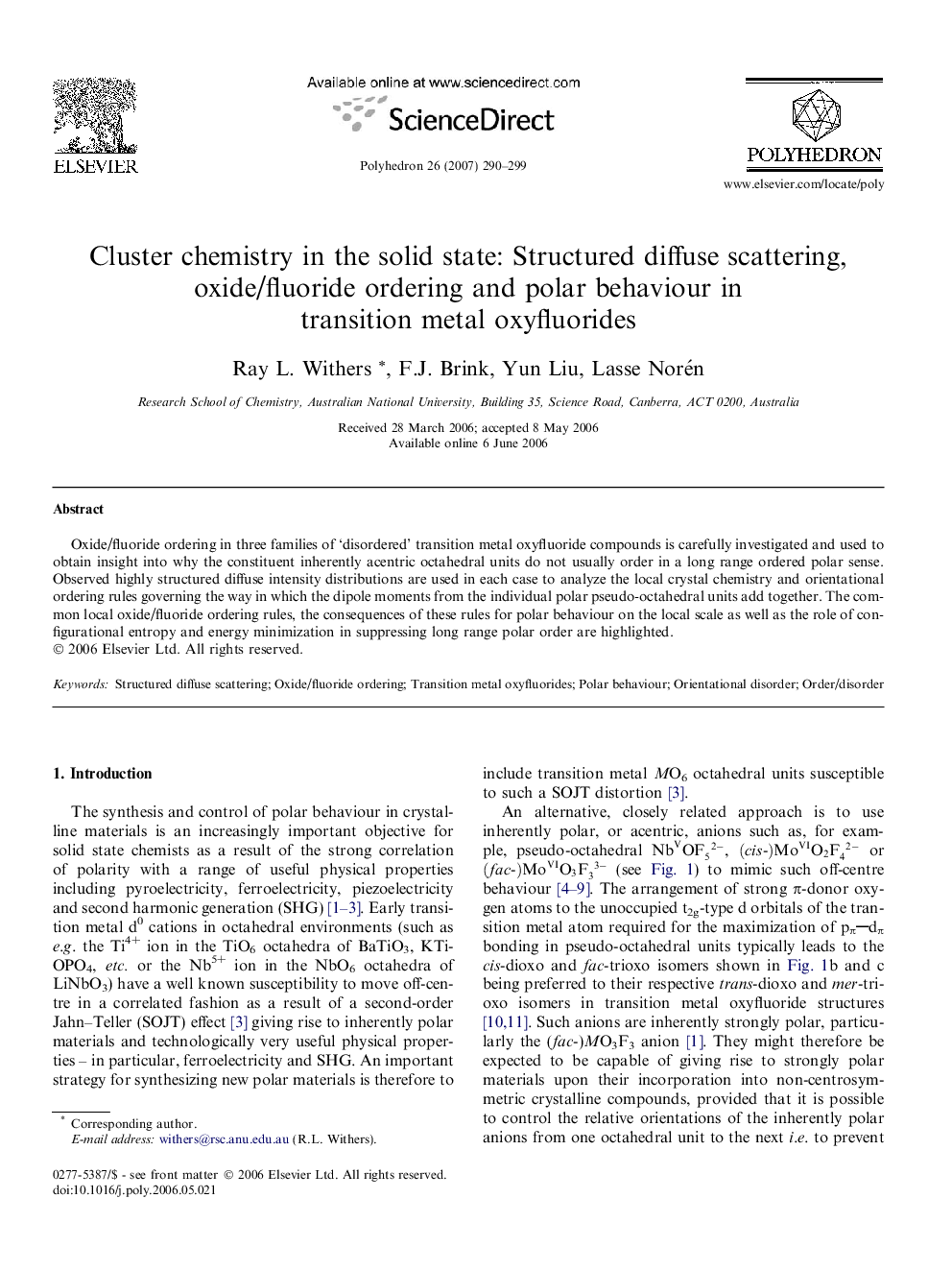| Article ID | Journal | Published Year | Pages | File Type |
|---|---|---|---|---|
| 1338851 | Polyhedron | 2007 | 10 Pages |
Oxide/fluoride ordering in three families of ‘disordered’ transition metal oxyfluoride compounds is carefully investigated and used to obtain insight into why the constituent inherently acentric octahedral units do not usually order in a long range ordered polar sense. Observed highly structured diffuse intensity distributions are used in each case to analyze the local crystal chemistry and orientational ordering rules governing the way in which the dipole moments from the individual polar pseudo-octahedral units add together. The common local oxide/fluoride ordering rules, the consequences of these rules for polar behaviour on the local scale as well as the role of configurational entropy and energy minimization in suppressing long range polar order are highlighted.
Graphical abstractShows one of the 8000 possible local configurations in projection along 〈1 1 1〉 which satisfy the local constraint that the sum of the dipole moments of the six MoVIO3F33- octahedra surrounding any central B ion (equivalently the sum of the off-centre displacements of the Mo ions) must sum to zero. The F− ions are represented by the small dark balls while the O2− ions are represented by the small open balls. The induced off-centre shifts of the metal ions are represented by the arrows.Figure optionsDownload full-size imageDownload as PowerPoint slide
